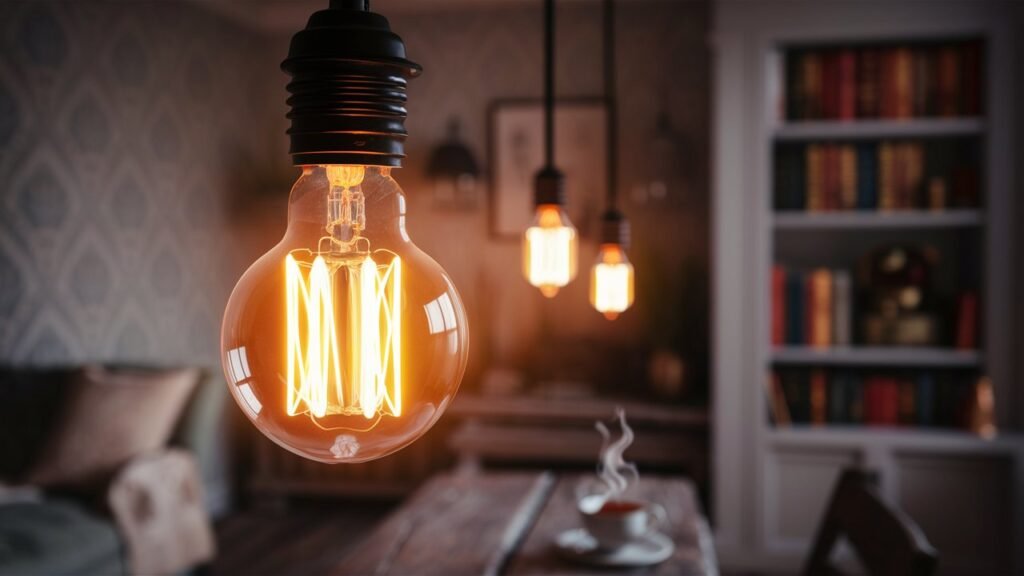The Light Bulb Revolution: How This Small Invention Brightened The World And Changed Our Lives
The light bulb—often taken for granted—is one of the most important inventions in human history. It has reshaped the way we live, work, and play, and has had a profound impact on the world’s economy, culture, and technological progress. The invention of the light bulb was a turning point in history, marking the beginning of a new era where humans could extend the hours of the day, create new possibilities for work and leisure, and foster innovation like never before.

But how did this small invention change the world? And how did it evolve into the energy-efficient, multi-purpose lighting solutions we use today?
The History of the Light Bulb: A Journey from Darkness to Light
The journey of the light bulb began long before Thomas Edison patented his version in 1879. In fact, the first crude forms of electric light date back to the early 19th century.
- Early Attempts: The first form of electric light was the arc lamp, developed by Humphry Davy in 1806. However, these lamps were far too bright and impractical for everyday use.
- Edison’s Breakthrough: While Edison is often credited with the invention of the light bulb, he was building on the work of many inventors before him. His key innovation was the creation of a practical and long-lasting filament, made from carbonized bamboo, which allowed the bulb to shine for hours on end without burning out.
- The Age of Electricity: The widespread adoption of electric lighting began to take off in the late 19th century, bringing a wave of new inventions and industries. Electric light helped transform cities by extending the workday and allowing for nighttime activities.
How Light Bulbs Revolutionized the World
The light bulb had far-reaching effects on almost every aspect of human life:
- Extended Work Hours: Before the light bulb, people worked primarily during daylight hours. With the advent of artificial lighting, work could continue well into the evening, giving rise to new industries, extended hours of operation, and a shift in the global economy.
- Impact on Cities: The invention of street lighting changed the face of urban environments. Cities became safer and more vibrant at night, leading to increased nighttime activity, commerce, and social life.
- The Home and Personal Life: At home, electric light bulbs provided comfort and convenience. No longer did families have to rely on candles or gas lamps, which were dangerous and inefficient. The light bulb revolutionized the way people interacted with their homes and with each other.
The Evolution of Light Bulbs: From Incandescent to LED
As the demand for more efficient, longer-lasting light sources grew, the light bulb evolved.
- Incandescent Bulbs: These early light bulbs, though groundbreaking, were inefficient. They generated more heat than light and consumed a significant amount of electricity.
- Fluorescent and Compact Fluorescent Lamps (CFLs): In the mid-20th century, fluorescent bulbs emerged as a more energy-efficient alternative to incandescent bulbs. CFLs were later developed to offer even more energy savings.
- LED Technology: Today, Light Emitting Diodes (LEDs) dominate the market, offering up to 80% more energy efficiency than traditional incandescent bulbs. LEDs last much longer, produce less heat, and are available in a variety of color temperatures, making them ideal for a wide range of applications.
The Environmental Impact of Light Bulbs
One of the most significant benefits of modern light bulbs is their energy efficiency. By switching from incandescent bulbs to LEDs, we can drastically reduce our electricity consumption and lower carbon emissions. This shift is crucial for addressing climate change and ensuring a sustainable future.
- Energy Savings: LED bulbs consume less energy than traditional bulbs, meaning less power is needed to illuminate a space. This translates into reduced utility bills and less strain on the power grid.
- Longer Lifespan: LED bulbs can last up to 25 times longer than incandescent bulbs, reducing waste and the need for frequent replacements.
The Future of Light Bulbs: Smart Lighting and Beyond
As technology continues to advance, light bulbs are becoming smarter. Today’s light bulbs can be controlled remotely, change color, and even sync with other smart devices in your home.
- Smart Bulbs: These bulbs can be connected to your Wi-Fi network, allowing you to control them using your smartphone or voice commands. You can adjust brightness, color, and even set schedules for when your lights should turn on or off.
- Integration with Other Technologies: Smart bulbs are now being integrated with home automation systems. You can set your lights to change based on the time of day, your mood, or even your sleep schedule, creating a more personalized and energy-efficient living environment
The Light Bulb Revolution: How This Small Invention Brightened The World And Changed Our Lives
